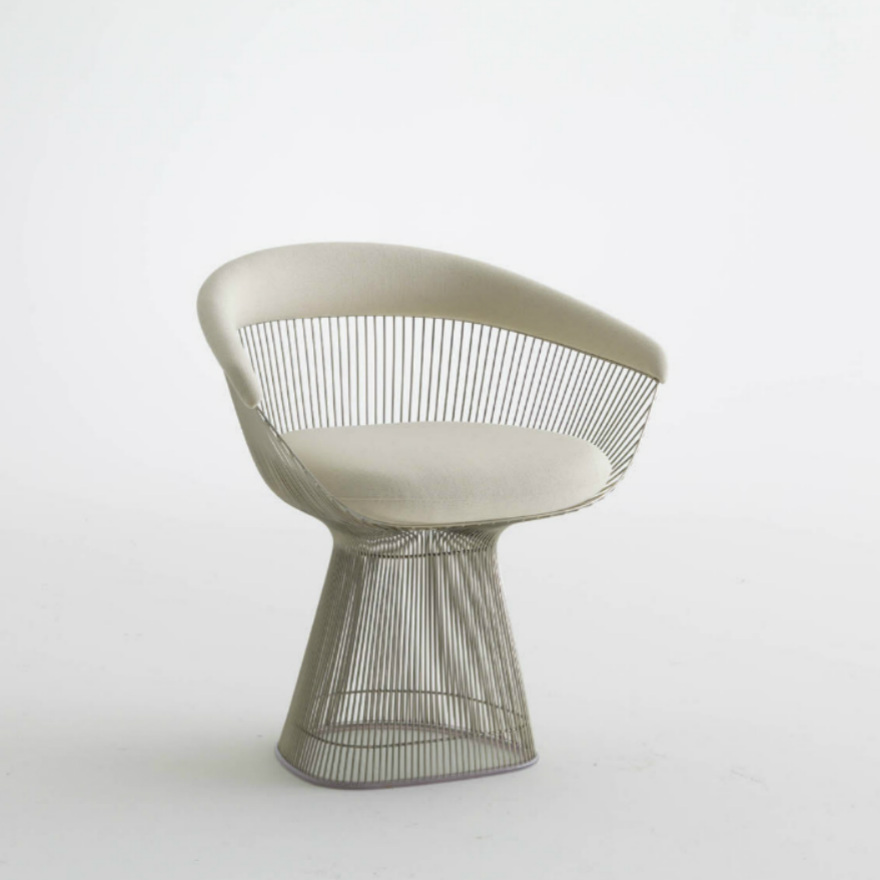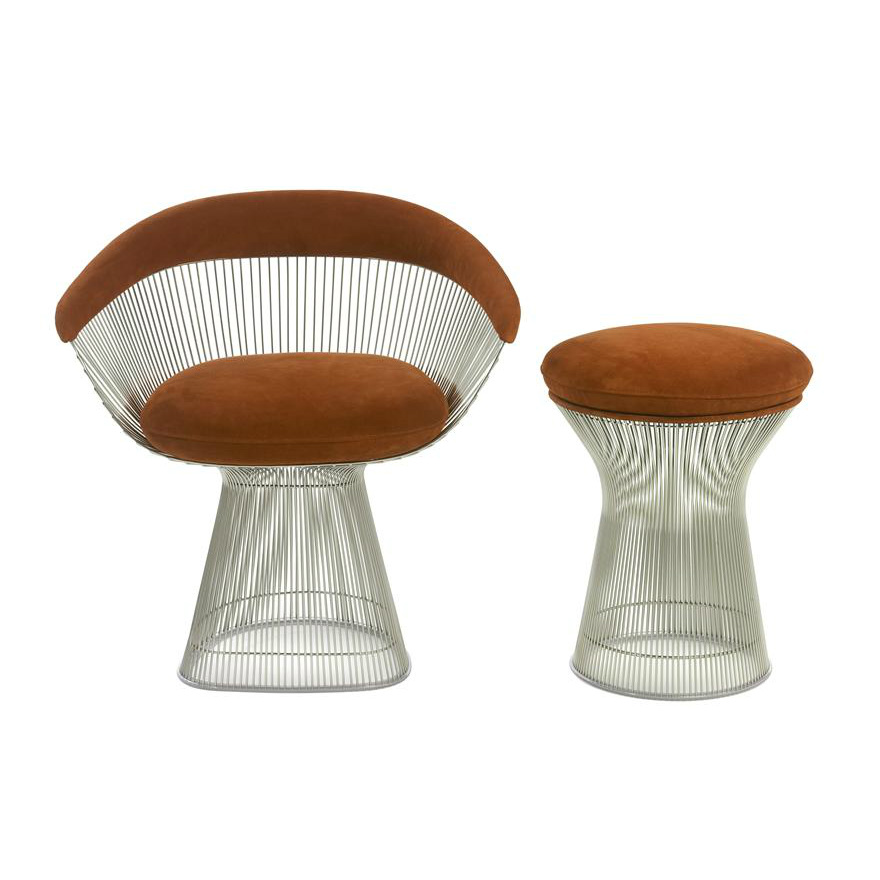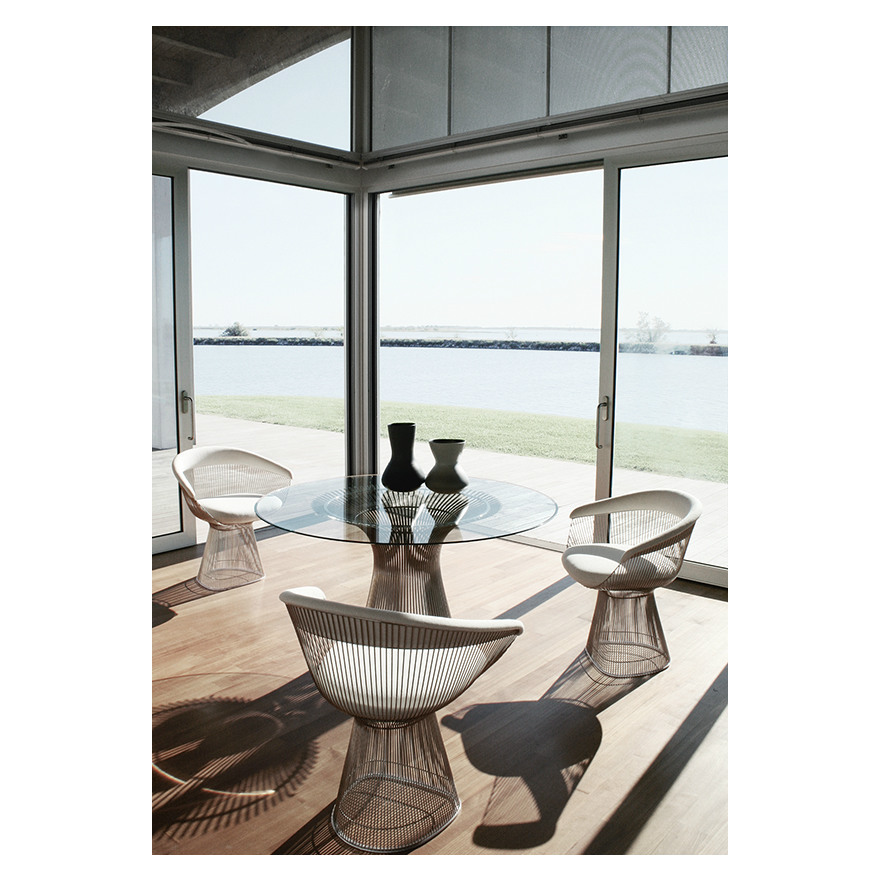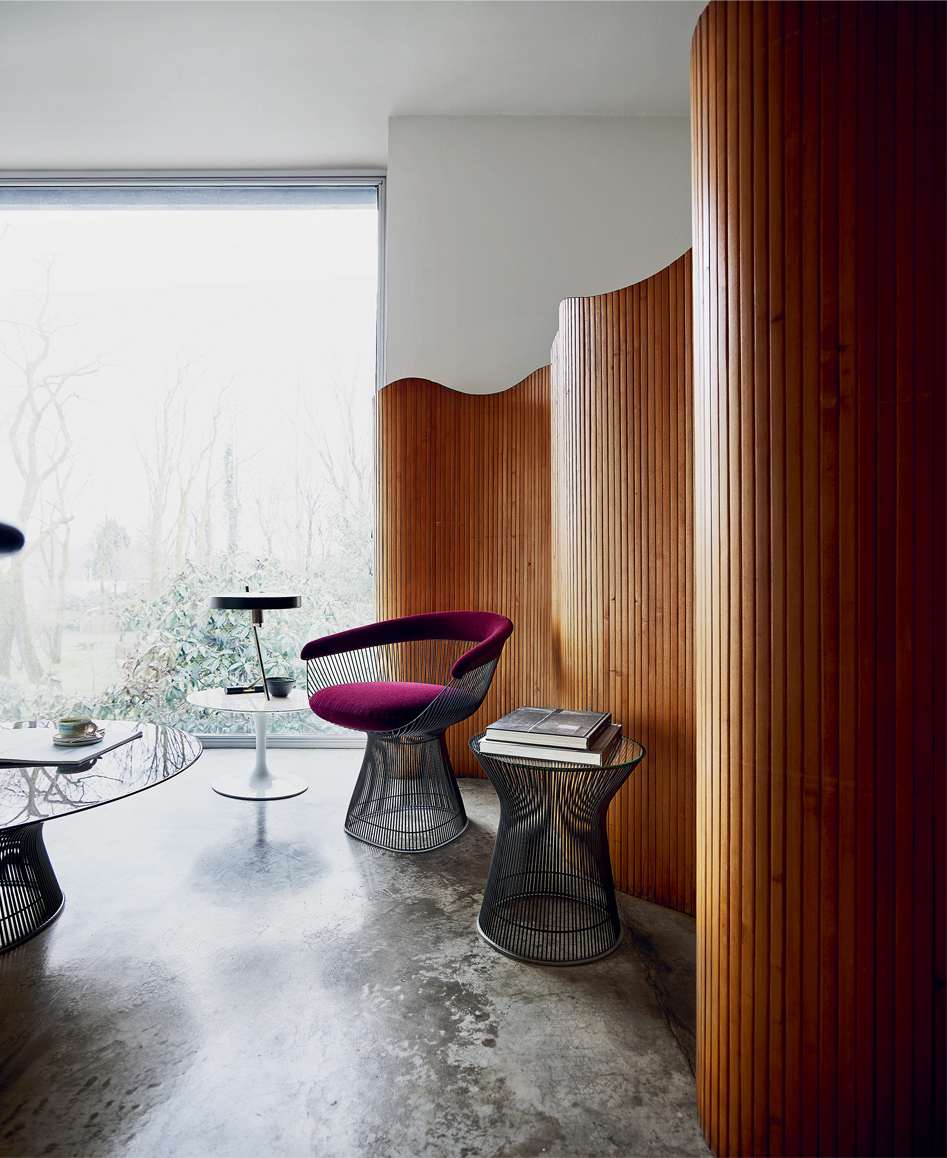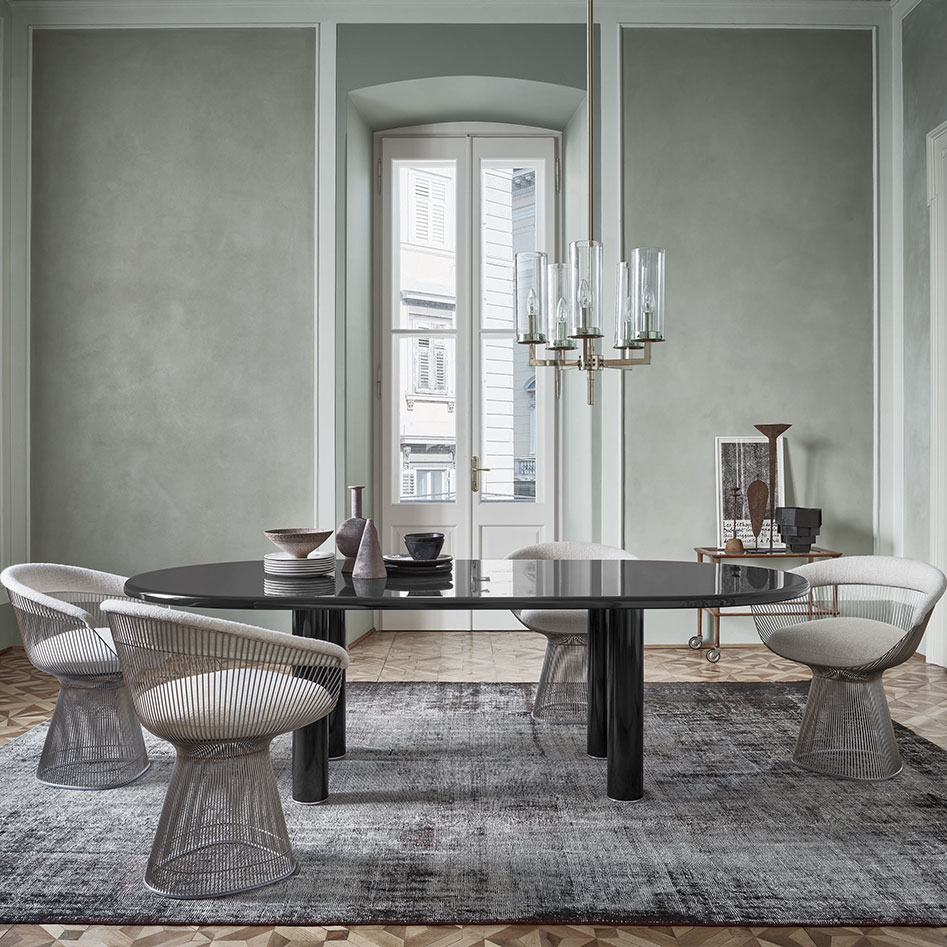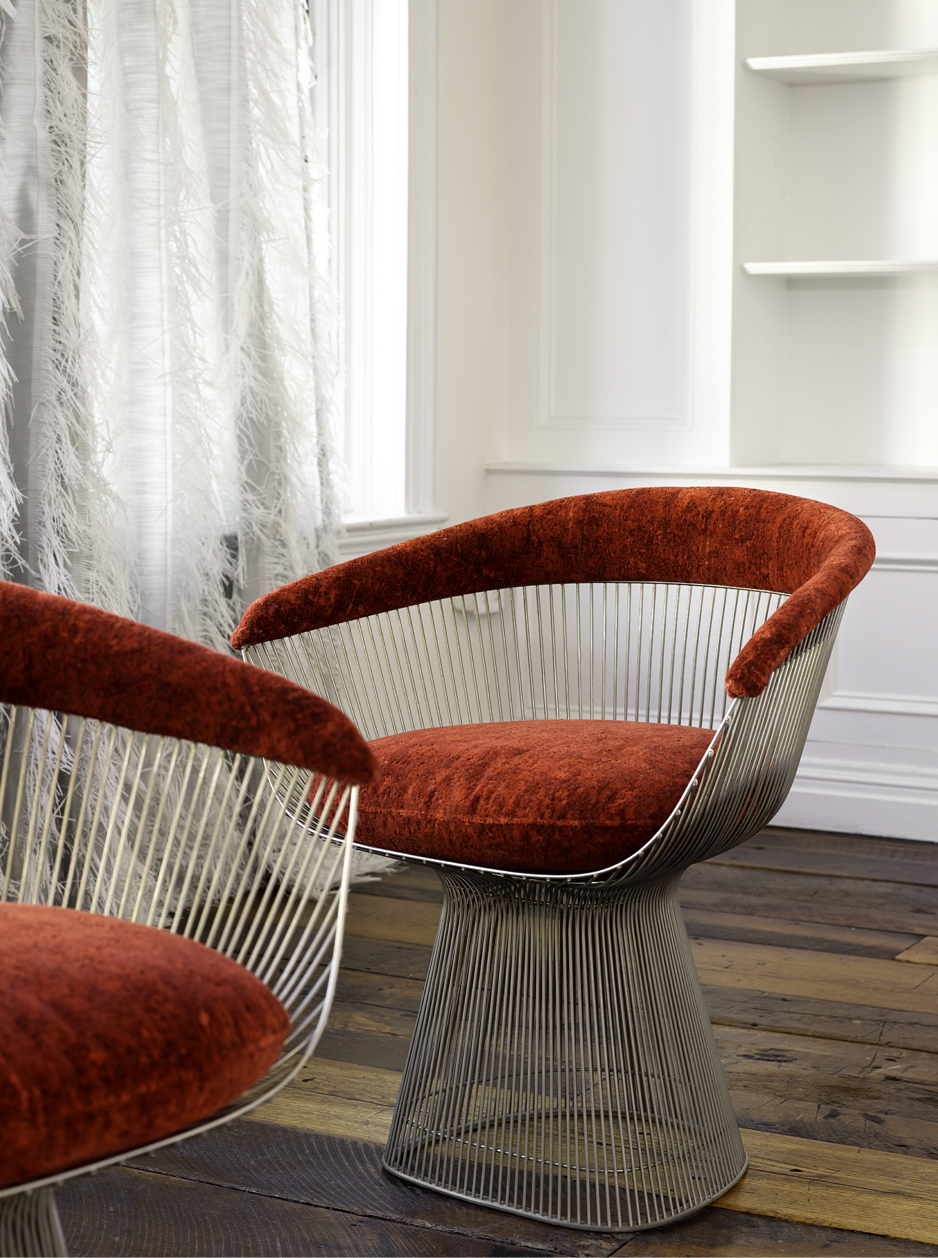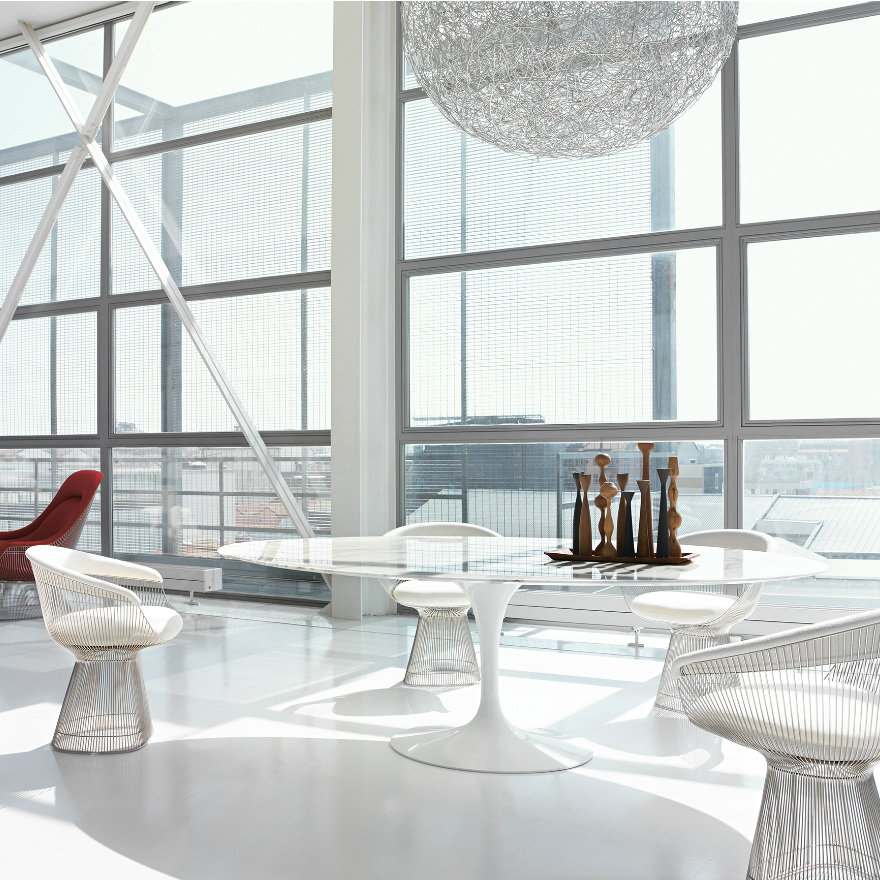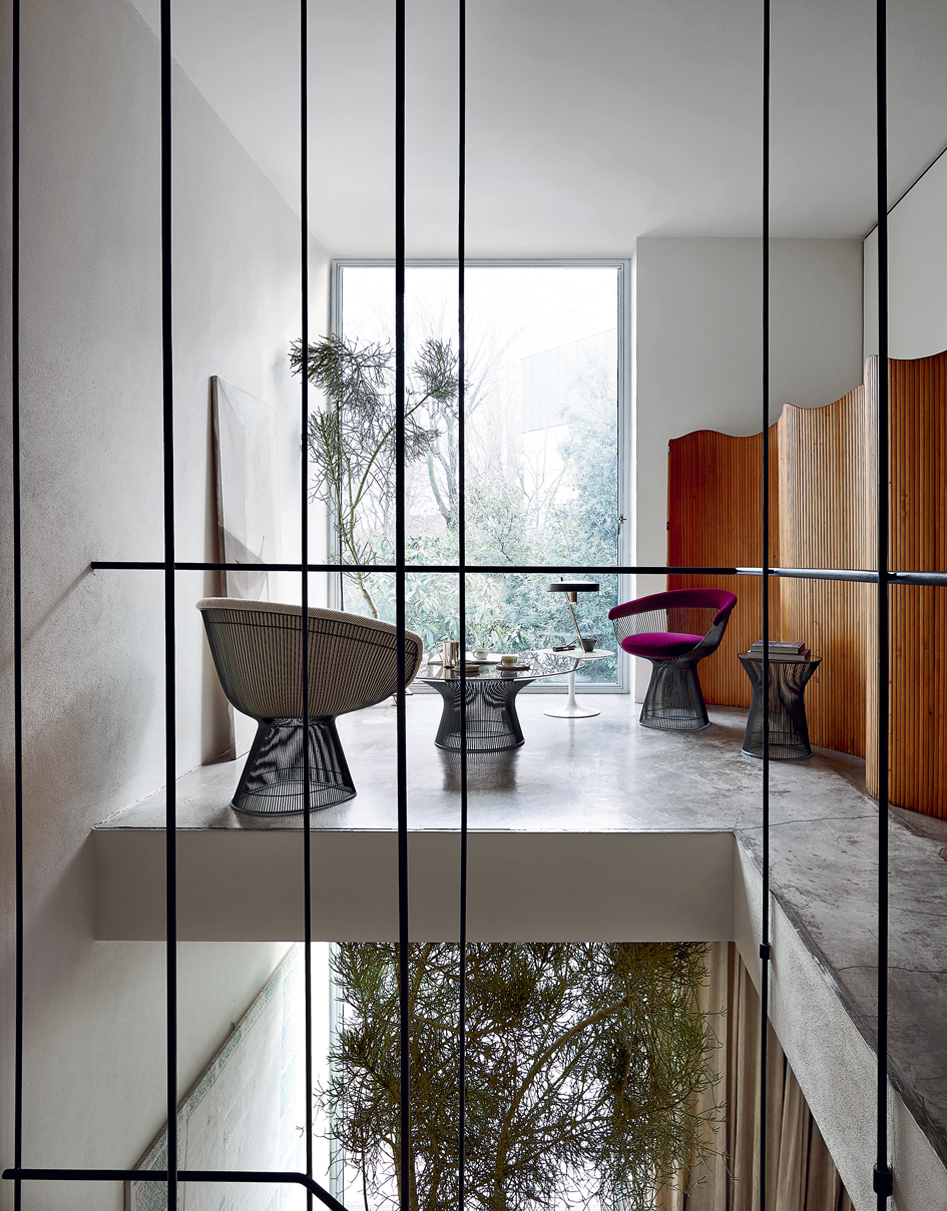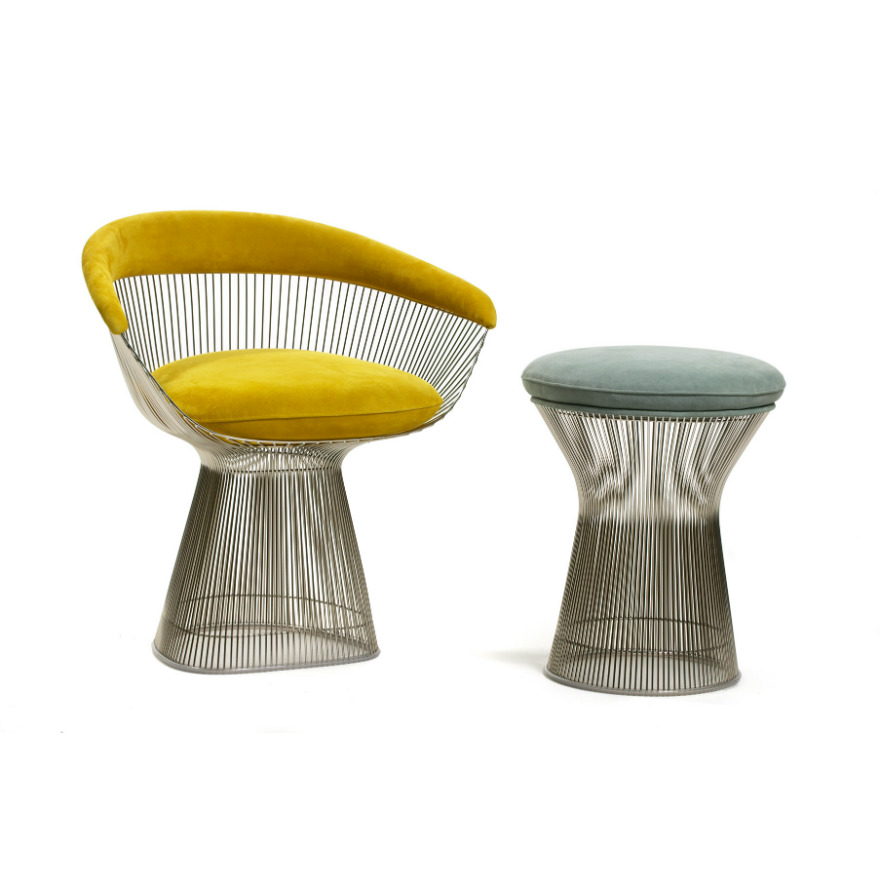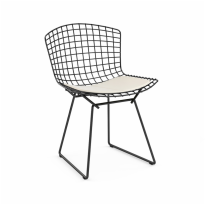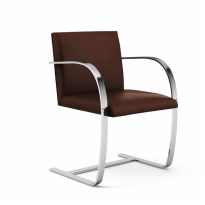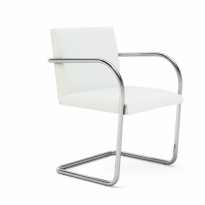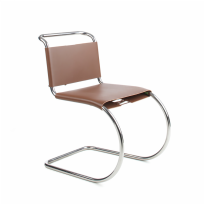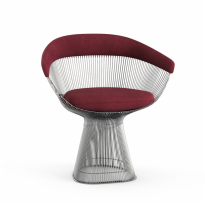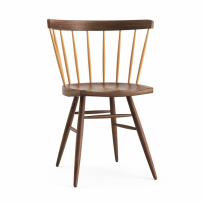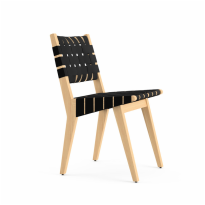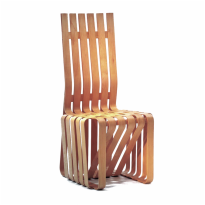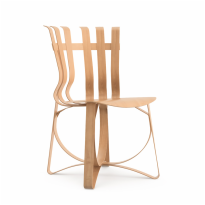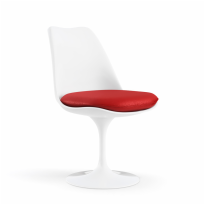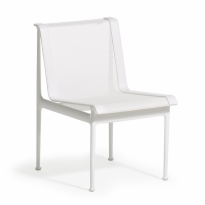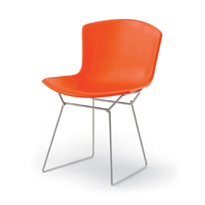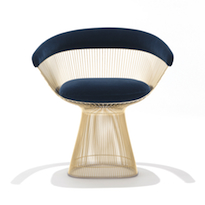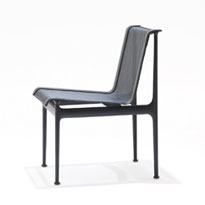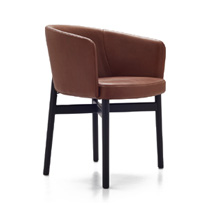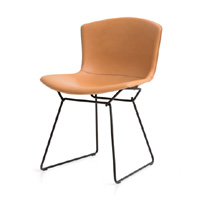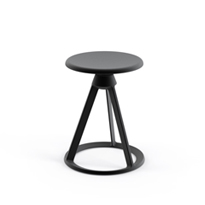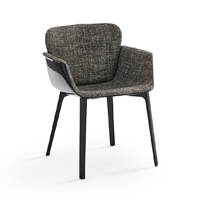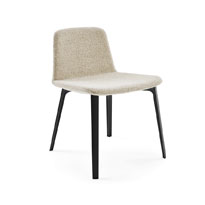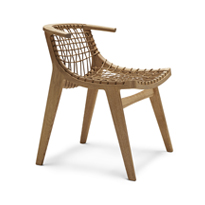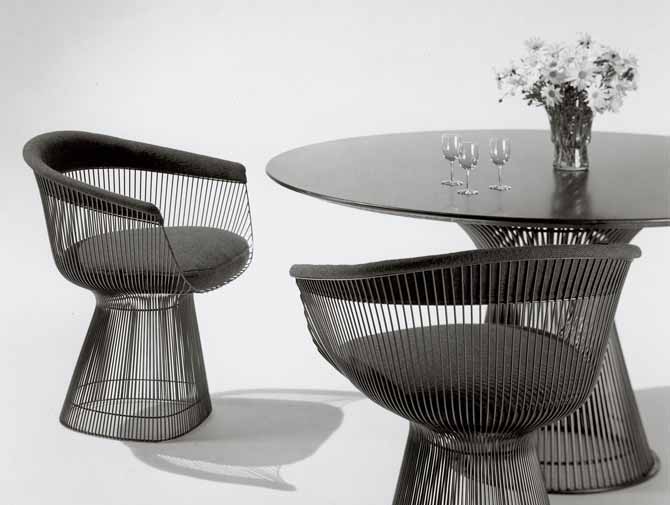With his experience in the firm of Eero Saarinen and Associates, it is not surprising that the mantel for the second generation of pedestal and wire furniture fell on the creative shoulders of Warren Platner. Reflecting a dramatic shift in cultural values, modernism became more expressive in the 1960s. Platner felt there was an opportunity to merge the competing aesthetics of the time.
“I began to think about what I thought furniture, specifically a chair, really might be, starting with the philosophy that it isn’t going to be aggressively technological, or aggressively handicraft…I, as a designer, felt there was room for the kind of decorative, gentle, graceful kind of design that appeared in period style like Louis XV, but it could have a more rational base instead of being applied decoration…I thought why separate support from the object. Just make it all one thing. Starts at the floor and comes up and envelops me, supports me…What I wanted to achieve was a chair that, number one, was complementary to the person sitting in it, or to the person in the space between the wall and the chair — what the chair did for the person in respect to the scale of the person and the space.”
